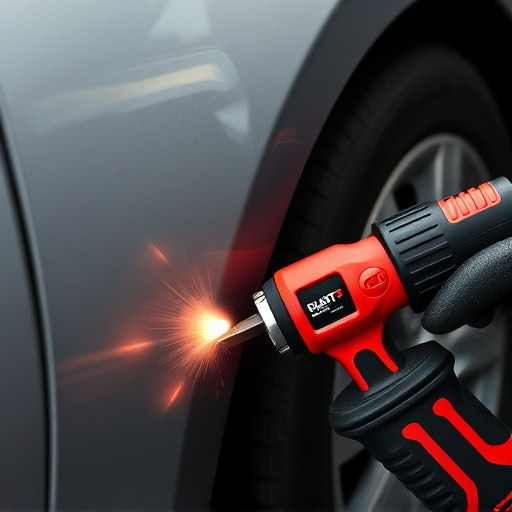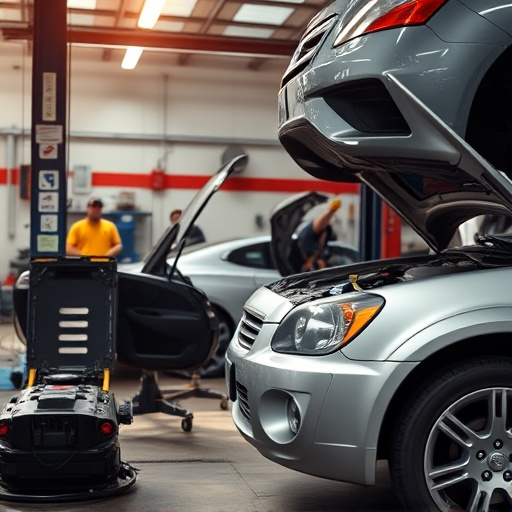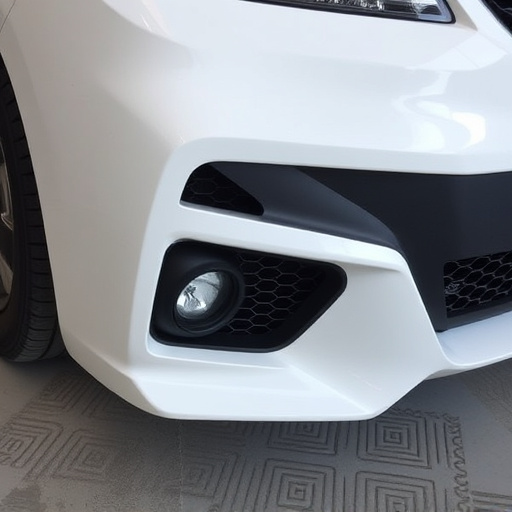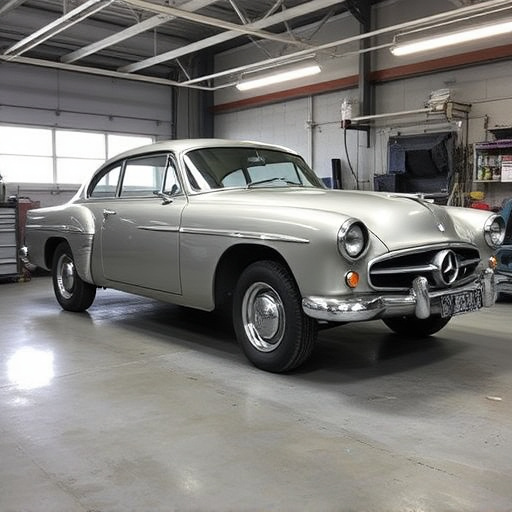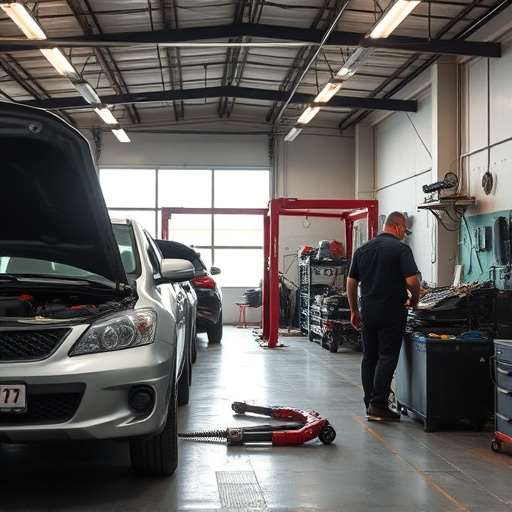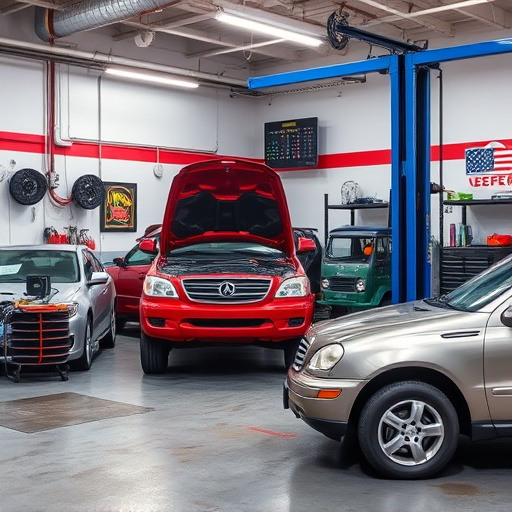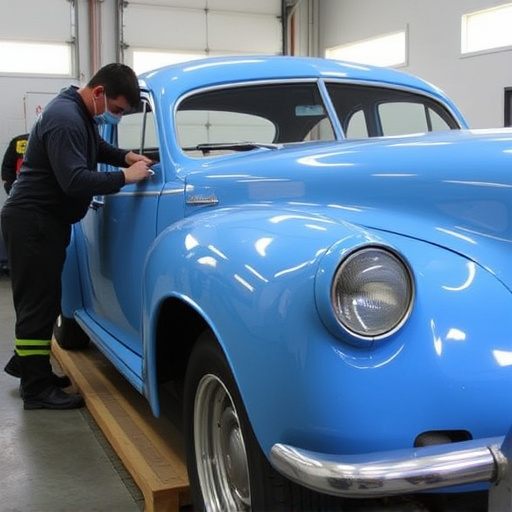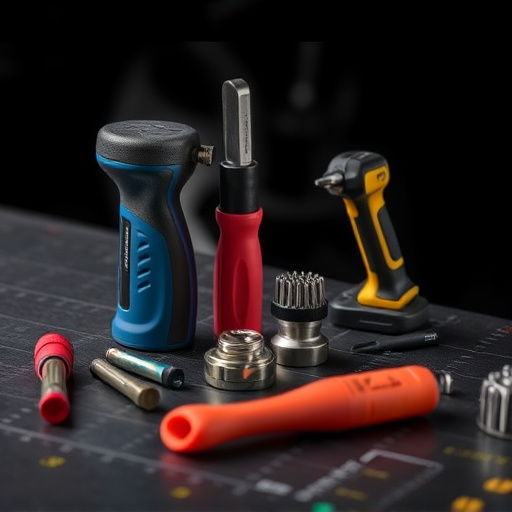In climates with high moisture, corrosion poses a significant threat to vehicles, impacting both structure and aesthetics. Early identification through visual checks is crucial, focusing on rust spots, paint issues, and metal degradation. Prompt action involves assessing pitting, flaking, or layer loss and implementing tailored protection treatments like anti-corrosion coatings during paint repairs and protective undercoats for new body panels. A comprehensive vehicle damage assessment before corrosion protection procedures ensures effective decisions, extending vehicle lifespan and resale value by preventing further deterioration.
In the realm of repairs, corrosion is an insidious enemy that can compromise structural integrity and lead to costly failures. Knowing when to apply corrosion protection during the repair process is crucial for long-lasting results. This article guides you through identifying corrosion, understanding its impact, and selecting suitable corrosion protection procedures. From recognizing signs like rust and pitting to assessing damage, we’ll explore best practices for integration into your repair strategies, ensuring longevity and preventing future corrosion challenges.
- Identifying Corrosion: When Intervention is Necessary
- – Understanding the signs and types of corrosion
- – Assessing the extent of damage and its impact
Identifying Corrosion: When Intervention is Necessary
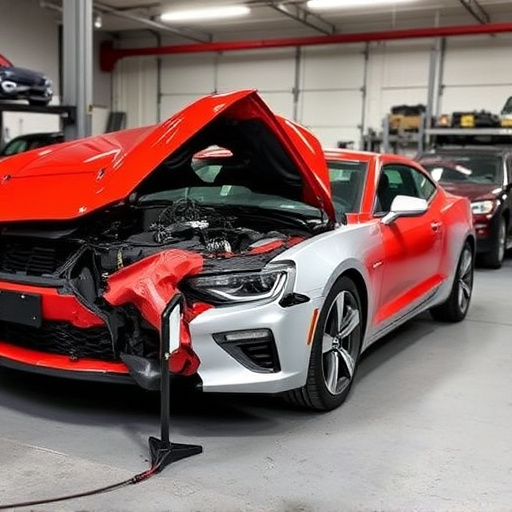
Corrosion is a silent yet damaging enemy that can compromise the structural integrity and aesthetic appeal of vehicles, especially in regions with harsh climates or environments prone to moisture. Identifying corrosion early on is crucial for effective intervention through appropriate corrosion protection procedures. Regular visual inspections are key; look for signs like rust spots, peeling paint, or any metal degradation, particularly in hard-to-reach areas like wheel arches and underbody components. These indicators suggest that corrosion has already begun, and it’s time to take action.
In the car body restoration or vehicle body repair process, addressing corrosion promptly is essential to prevent further damage. Delving into the affected areas, one might discover pitting, flaking, or even complete layer loss, which all warrant immediate intervention. Corrosion protection treatments should be tailored to the specific needs of the repair, whether it’s applying specialized anti-corrosion coatings during car paint repair or using protective undercoats beneath new body panels. Such measures ensure that once the vehicle is restored, it remains so for an extended period, safeguarding against future corrosion-related issues.
– Understanding the signs and types of corrosion
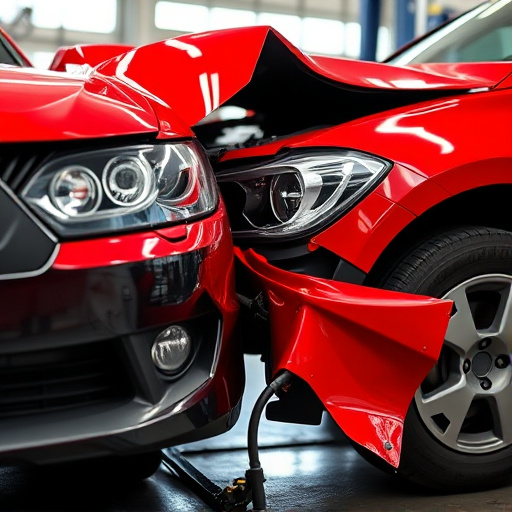
Corrosion is a common issue that can significantly impact the structural integrity and aesthetic appeal of vehicles, making it an essential concern in automotive repair and car restoration processes. Understanding corrosion goes beyond merely recognizing rust; it involves identifying various types and signs that indicate its presence. Corrosion protection procedures are vital to ensure the longevity and preservation of vehicles, especially those undergoing paint repair or full restoration.
The types of corrosion range from surface-level oxidation, visible as discolored spots on metal surfaces, to more severe cases where corrosion eats away at the material, leading to structural weaknesses. In automotive repair, it’s crucial to inspect underbody components, panels, and frames for any signs of corrosion before initiating restoration or repainting. Early detection allows for targeted treatment, preventing minor issues from escalating into costly repairs in car restoration projects.
– Assessing the extent of damage and its impact
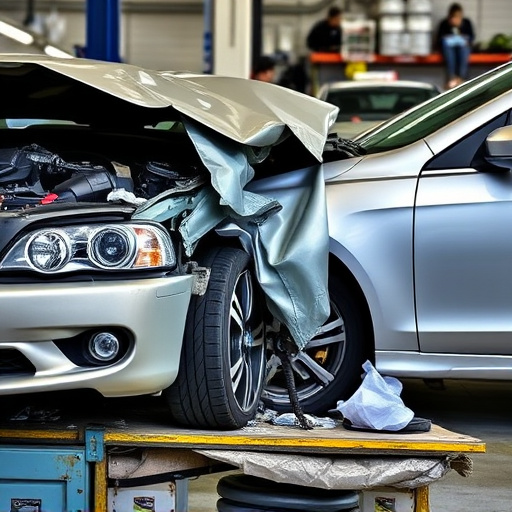
Before applying any corrosion protection procedures, it’s crucial to meticulously assess the extent of damage on the vehicle. This involves inspecting the affected areas for signs of rust, pitting, or structural compromise—all indicators that can influence the need for corrosion protection. The impact of corrosion goes beyond aesthetics; it can significantly weaken a vehicle’s structure, compromising safety and performance. A thorough assessment helps in determining the severity of the issue and identifying which parts may require specialized body shop services for dent repair or fender bender fixes.
Understanding the damage is key to deciding on the appropriate corrosion protection measures. For instance, while a minor dent may only need surface treatment, a more severe collision could necessitate replacing corroded panels or treating underlying metal to prevent further deterioration. Vehicle owners should remember that prompt action in these situations can significantly enhance the longevity and resale value of their vehicles by minimizing corrosion’s detrimental effects.
In conclusion, timely application of corrosion protection procedures during repairs is paramount to mitigating future damage and ensuring structural integrity. By identifying corrosion early, assessing its severity, and employing suitable protective measures, professionals can preserve assets and extend their lifespan in diverse environments. Understanding these processes is key to effective maintenance strategies.
